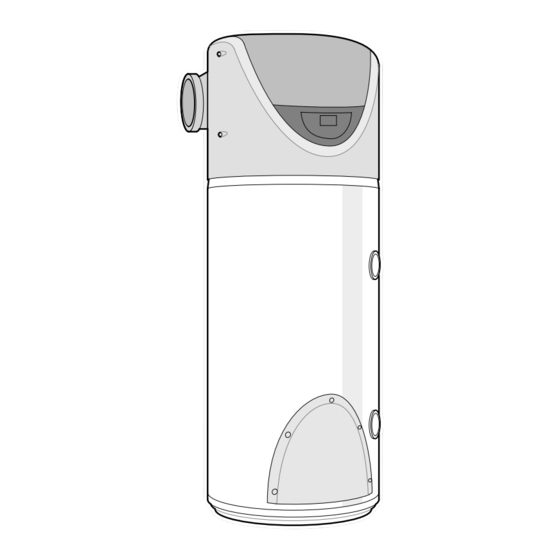Ariston NUOS FS 200 Інструкція з монтажу та обслуговування - Сторінка 31
Переглянути онлайн або завантажити pdf Інструкція з монтажу та обслуговування для Водонагрівач Ariston NUOS FS 200. Ariston NUOS FS 200 44 сторінки. External air source heat pump water heater

6.13 TPRV & PRV D
6.14 TPRV
PRV
AND
D
P
- T
ISCHARGE
IPES
6.15 B
R
UILDING
EGULATIONS
Discharge pipes from safety devices
Discharge pipe D1
3.49Each of the temperature relief valves or
combined temperature and pressure relief valves
specified should discharge either directly or by way of
a manifold via a short length of metal pipe (D1) to a
tundish.
3.50The diameter of discharge pipe (D1) should be not
less than the nominal outlet size of the temperature
relief valve.
3.51Where a manifold is used it should be sized to
accept and discharge the total discharge from the
discharge pipes connected to it.
3.52Where valves other than the temperature and
pressure relief valve from a single unvented hot water
system discharge by way of the same manifold that is
used by the safety devices, the manifold should be
factory fitted as part of the hot water storage system
unit or package.
Tundish
3.53The tundish should be vertical, located in the same
space as the unvented hot water storage system and
be fitted as close as possible to, and lower than, the
valve, with no more than 750mm of pipe between the
valve outlet and the tundish (see Diagram 1).
Note: To comply with the Water Supply (Water Fittings)
Regulations, the tundish should incorporate a suitable
air gap.
The discharge from the cylinder TPRV and combination PRV must be
ISCHARGE
plumbed to the tundish and should not be used for any other purpose.
The tundish must be vertical and fitted within 750mm of the pressure relief
valve and must be located with the NUOS. The tundish must be in a
position visible to the occupants, and positioned away from any electrical
devices. The discharge pipe from the tundish should terminate in a safe
place where there is no risk to persons in the vicinity of the discharge, and
be made of a suitable material in line with Building Regulation G3 (preferably
metal).
The tundish must not be located near or above electrical components,
switches or junction boxes.
The discharge pipes from safety devices (tundish) must be installed to
fully comply with Part G3 of the Building Regulations (latest edition).
G
O
ULLY
The following text, and diagram 1 are reproduced from G3 Building
Regulations 2010 (as amended) Draft.
G3
The following text in the shaded area is reproduced from the Building
Regulations. It is included here for reference only.
WARNING
Scalding water and steam can be blown out of the discharge
pipe. Position the discharge so that it is not a hazard to
property or people (especially children).
3.54Any discharge should be visible at the tundish. In
addition, where discharges from safety devices may not
be apparent, e.g. in dwellings occupied by people with
impaired vision or mobility, consideration should be given
to the installation of a suitable safety device to warn
when discharge takes place, e.g. electronically operated.
Discharge pipe D2
3.55The discharge pipe (D2) from the tundish should:
a.
have a vertical section of pipe at least 300mm long
below the tundish before any elbows or bends in
the pipework (see Diagram 1); and
b.
be installed with a continuous fall thereafter of at
least 1 in 200.
3.56The discharge pipe (D2) should be made of:
a.
metal; or
b.
other material that has been demonstrated to be
capable of safely withstanding temperatures of the
water discharged and is clearly and permanently
marked to identify the product and performance
standard (e.g.) as specified in the relevant part of
BS 7291).
3.57The discharge pipe D2 should be at least one pipe
size larger than the nominal outlet size of the safety
device unless its total equivalent hydraulic resistance
exceeds that of a straight pipe 9m long, i.e. for discharge
pipes between 9m and 18m the equivalent resistance
31
31
